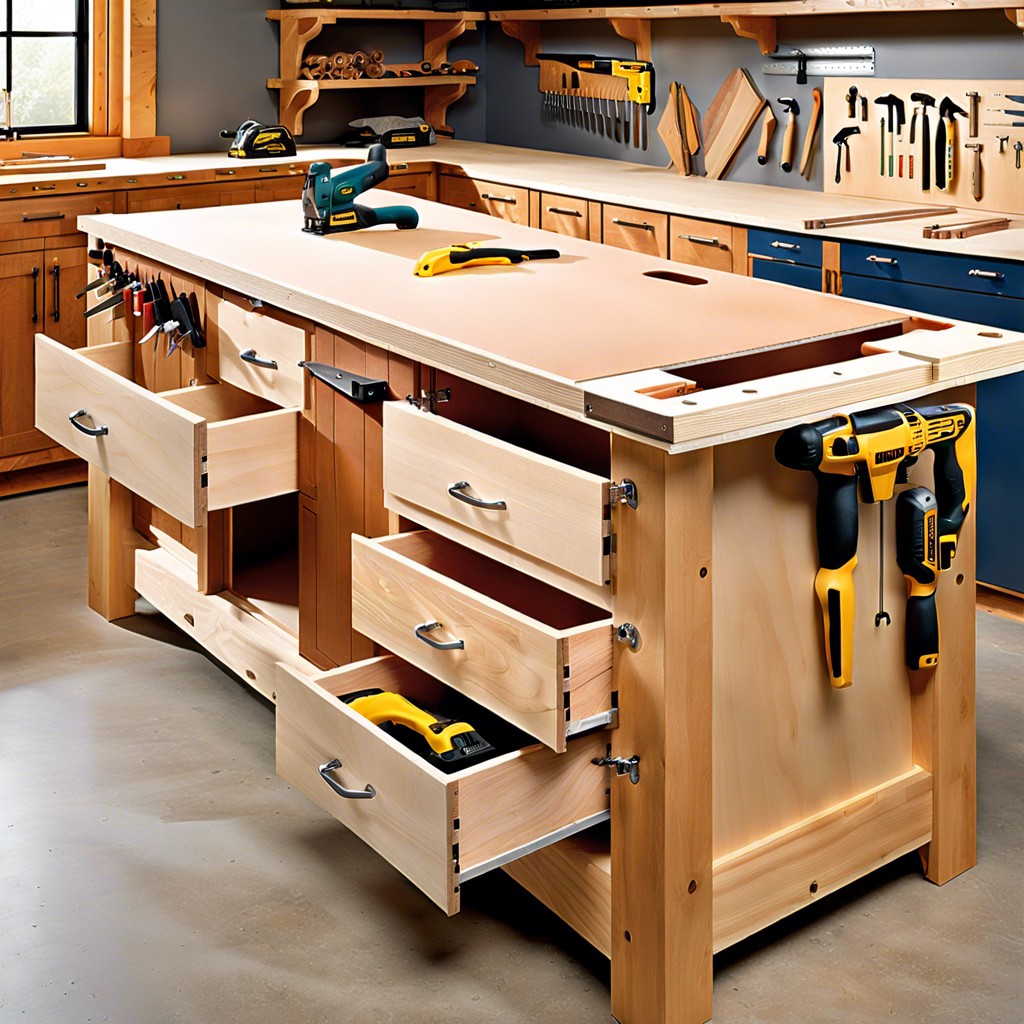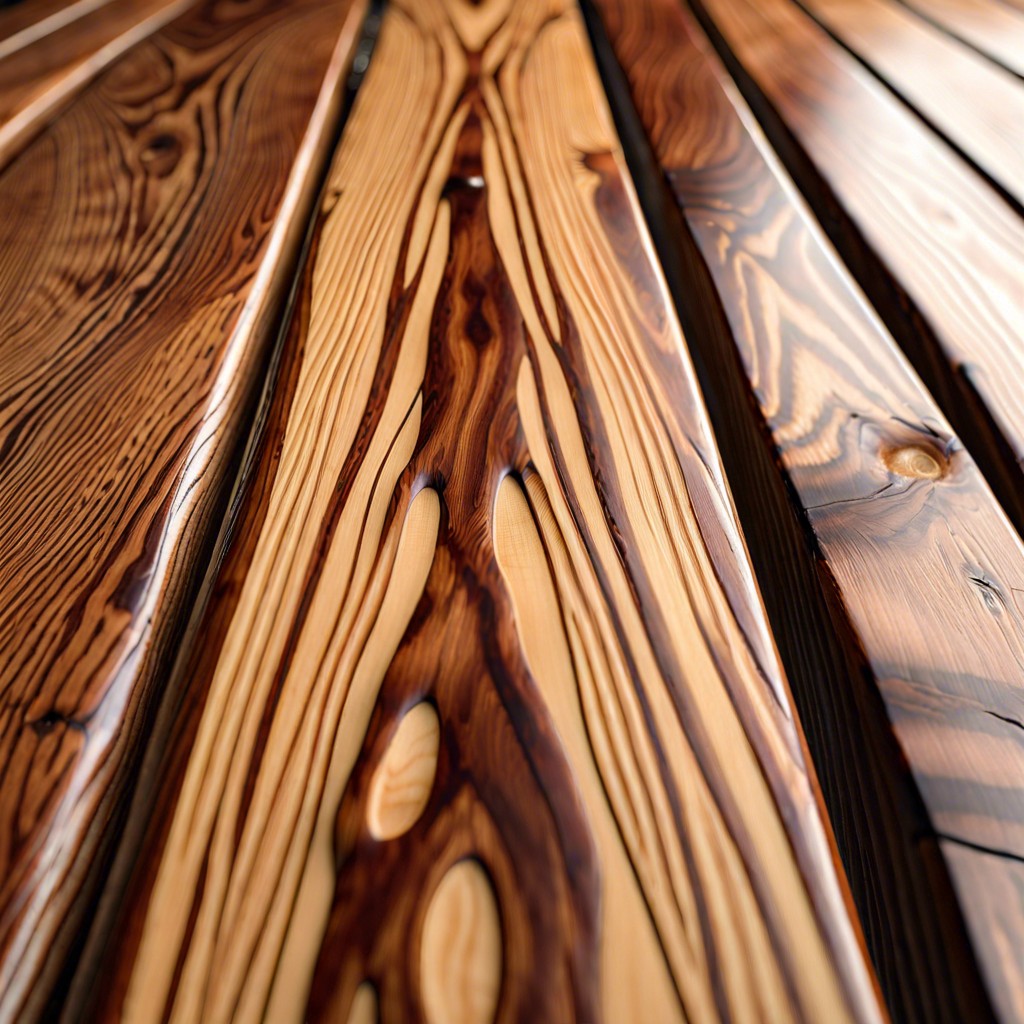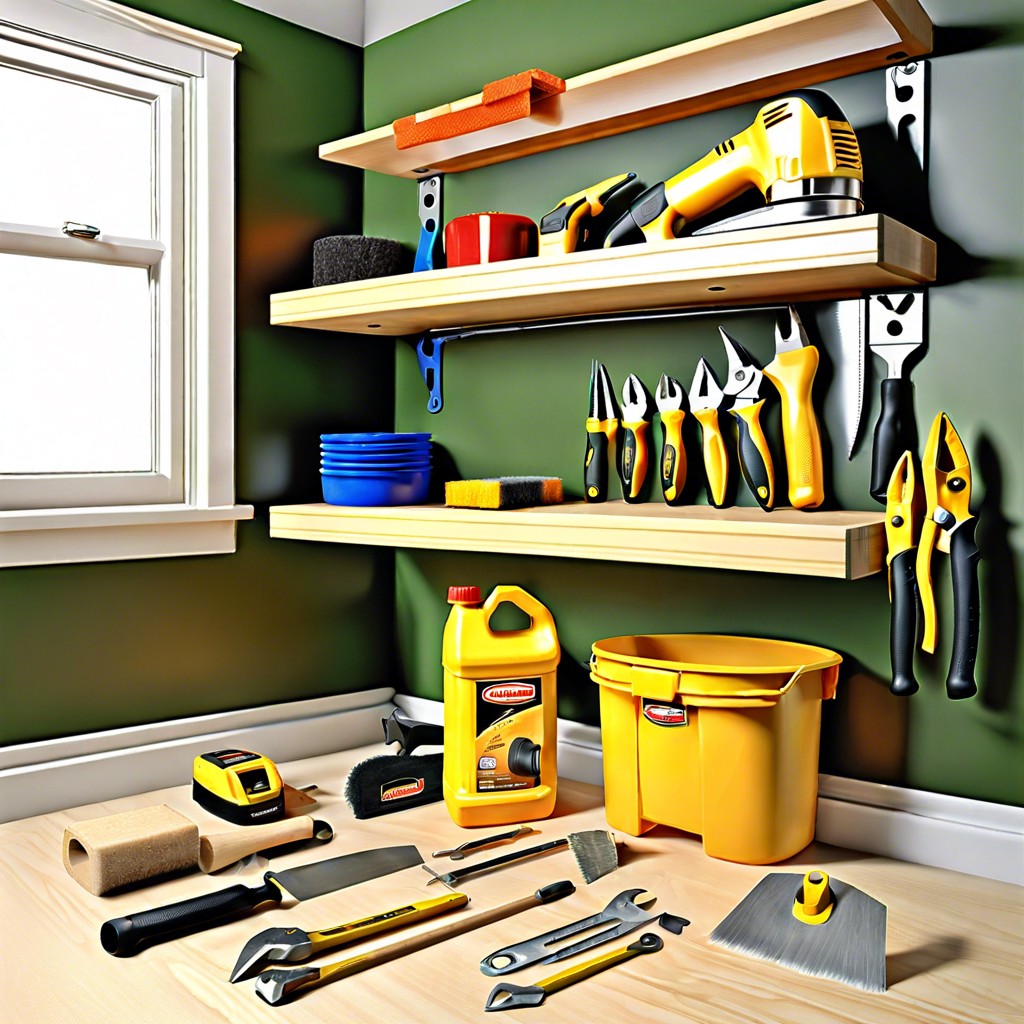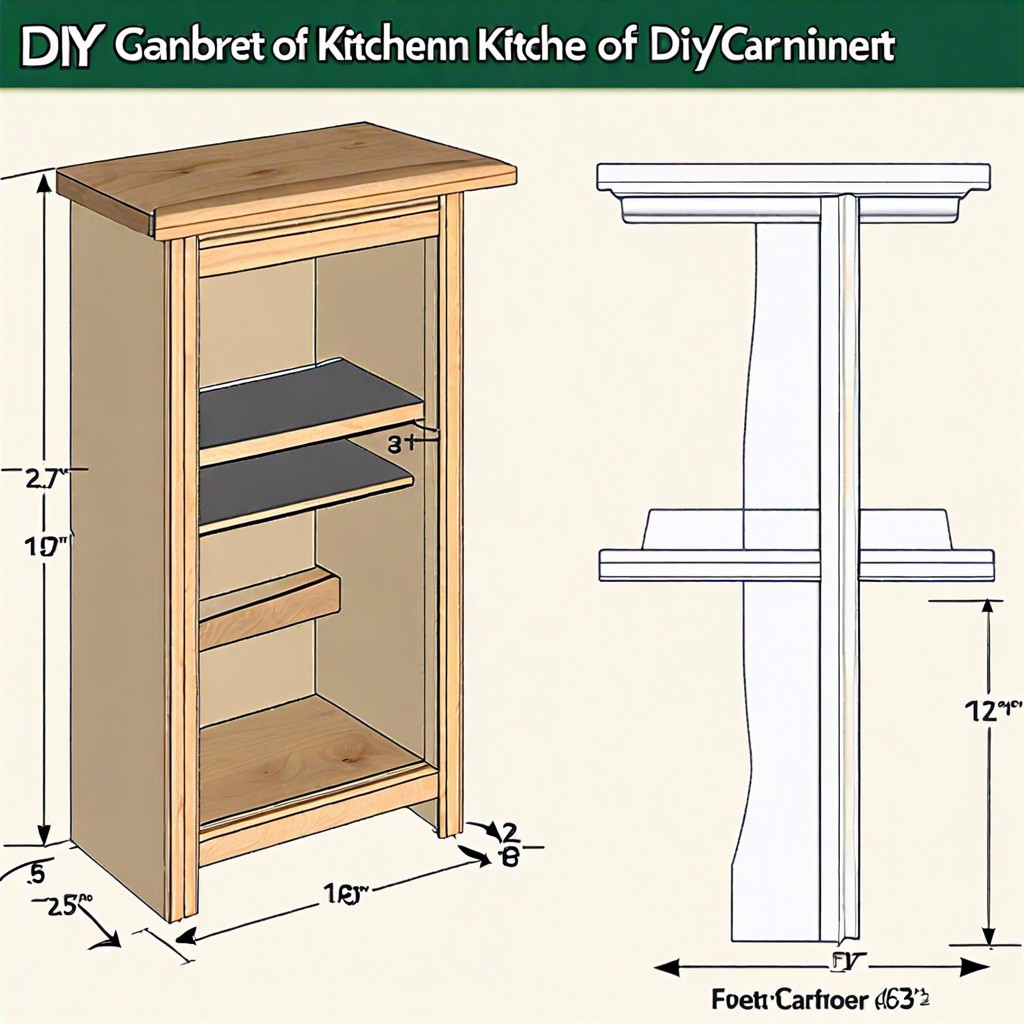Last updated on
Learn how to craft cabinet doors with this step-by-step guide that will walk you through the necessary tools, materials, and techniques.
Key takeaways:
- Choose the right materials for your cabinet doors
- Accurate measurements are essential for a perfect fit
- Cut and assemble rails, stiles, and plywood for the door frame
- Use proper joinery techniques to ensure durability
- Install hinges carefully for smooth door movement
What's Inside
Materials for Door Build

Selecting the right materials is where the rubber meets the road. You’ll want wood that’s not only sturdy but also easy on the eyes. Hardwoods, like maple or oak, bring longevity to your project, while softwoods, such as pine, can be kinder to your budget. If you’re leaning towards a painted finish, medium-density fiberboard (MDF) is a paint-friendly contender.
For the door’s front, consider plywood with a handsome veneer—it’s a bang for your buck and can significantly elevate the look without straining your wallet. You could also go for solid wood panels, although that’s a pricier path.
On to the skeleton – rails and stiles (the horizontal and vertical framework of your cabinet door, respectively). Solid wood is a shoo-in for a classic, enduring build that can stand the test of time.
Glue, screws, or dowels? Each has its champions. Wood glue offers a stronghold without breaking the bank. Screws can add extra durability for heavyweight doors. Dowels are for the crafty, adding strength while keeping the look seamless.
Finally, consider the hardware. Hinges are the heart of functional doors. Soft-close hinges are like the secret sauce – they prevent slammed doors and bequeath a luxurious feel, making cabinet doors that are a pleasure to use.
Remember, choose materials that reflect your style and meet the demands of your kitchen’s hustle and bustle.
Take Measurements
Accuracy is your best friend here, as the difference between a cabinet door that fits like a glove and one that’s askew can be a matter of millimeters. Size up the cabinet opening carefully, accounting for any discrepancies or warping in the existing structure.
Measure the height and width of each opening where a door will go. For overlay doors, remember to add extra width to cover the cabinet face frame. Typically, add about 1 inch to the width and height for a classic overlay. For inset doors, aim for a precise fit—precision is key here, so double-check those numbers.
Don’t forget to consider the space between doors. For pairs of doors, the industry standard is to leave about 1/8 inch between two doors, so calculate half of that (1/16 inch) for the additional width to each door.
Jot the numbers down, and then measure a second time to confirm. The old carpenter’s adage, “measure twice, cut once,” is a golden rule to live by—especially if you’re not keen on making surprise donations to the scrap wood pile.
Cut Rails, Stiles, and Plywood
Now, let’s get down to business with our saws. Grab your measurements and double-check them—twice. Remember, there’s no undo button in woodworking. For the rails and stiles, you’ll want solid wood for that oh-so-satisfying click of a well-made door. Cut them to the length making sure your stiles run the full height of the door. Your rails will fit cozily between them.
Next up is the plywood panel. It’s the centerpiece of your door, offering both function and style. Choose a sheet that smiles back at you with a nice grain. Cut it slightly smaller than the opening of the frame you’ve created with the rails and stiles. This will allow for the wood to expand and contract with the ever-fluctuating mood of the weather. No one likes a door that sticks or gaps!
A handy tip: sand the edges of your cuts as you go. It’s like paving the road to a smoother finish. This way, the assembling step will be like a hot knife through butter—effortless and satisfying.
Assemble Door
Putting the pieces together is like a dance where precision leads. Set the stage by laying out your rails (horizontal pieces) and stiles (vertical pieces) in the shape of your door frame. A pro tip: use a carpenter’s square to confirm all your angles are right as rain. Nothing throws off a jig like a wonky angle.
Now, let’s get to the crux of the operation—joinery. Dowels, biscuits, or mortise and tenon joints are your best pals here. These aren’t just any old pals; they’re the kind that keep your door from waving farewell at the first sign of a stiff breeze. If you’re feeling like a joinery jazz impresario, pocket holes are the improvisation that hold the groove together, concealed and sturdy.
The panel, often a svelte cut of plywood, slots into a groove running along the inside edge of the frame. This isn’t a game of force; let it slip in gently, a whisper rather than a shout. Leave space for the panel to expand and contract because, like opera singers, wood can be temperamental and needs room for a bit of dramatic flair.
Once it’s a snug fit, apply glue sparingly on the joints, as though adding just a touch of spice—too much and you’ll spoil the stew. Clamp it up! But remember, it’s a clasp, not a squeeze; too tight and the wood might just cry uncle.
Fasten your clamps and give the glue time to sing its sweet adhesive lullaby until it sets. Don’t rush this part—it’s the silent symphony of woodworking where time crafts perfection.
Install Hinges and Cabinet Doors
With the frame all set and looking sharp, it’s time to get those doors swinging open and closed smoothly. For this, your best pals are the hinges. Pick the right type to match your cabinet style – concealed hinges for a sleek look, or surface-mounted for a touch of tradition.
Mark the spots where the hinges will snuggle into the door – accuracy is your friend here. Drill pilot holes, align the hinge, and drive the screws home. This isn’t a race, take it step by step to avoid a wonky outcome.
For the cabinet side, it’s the same drill – pun intended. Align the door at the right height, mark the spot, and attach those hinges. If the door is a bit shy and won’t close properly, just adjust the hinges until it’s a perfect fit. Remember, patience here saves you a headache later on.
Lastly, swing that door open a few times. Feels good to see it move like a graceful dancer, doesn’t it? Just a few screws and some careful placement, but it feels like you’ve conquered the world – or at least the world of cabinet making.




